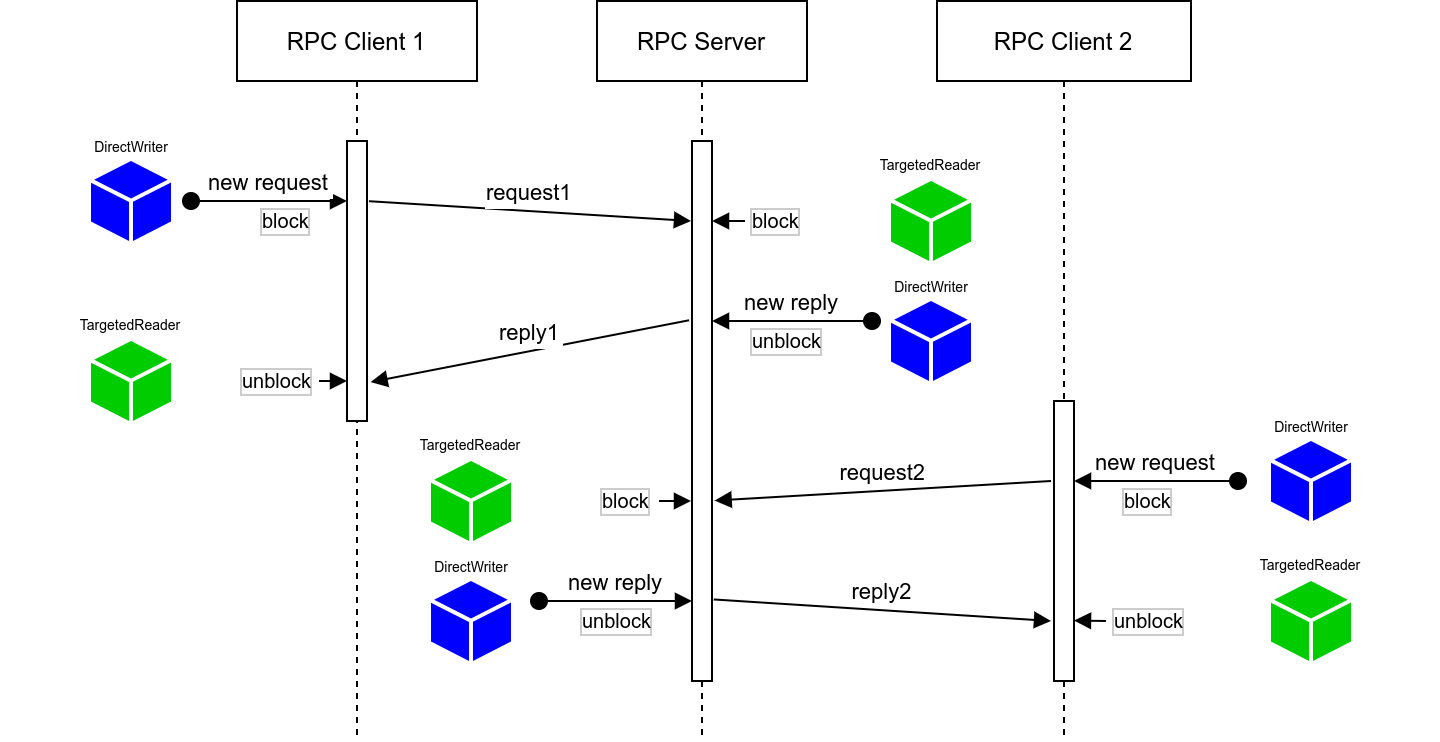5. Internal Protocols¶
This page briefly describes the protocols developed on top of DDS that enable AML-IP node communications as well as the deployment of the different scenarios presented in the user manual of this documentation.
5.1. DDS Topics¶
All the AML-IP Topics in the DDS AML-IP network have a previous name mangling.
So an AML-IP topic named , some_topic would actually be named amlip::some_topic in the underneath DDS network.
5.2. MultiService over DDS¶
A new communication protocol based on DDS has been designed in order to fulfill the necessity of distributing a task in a network. The idea is a Service protocol based on Client-Server communication where multiple servers could be available at the same time in the same network. This protocol creates an auto-regulated orchestration method where a task could be distributed to one and only one server that is publicly available, and each server receives no more than one task at a time.
5.3. RPC over DDS¶
The Remote Procedure Call based on DDS has been implemented to meet the need to distribute requests and replies across a network.
Unlike how it is implemented in ROS 2 (with Fast DDS as middleware), topic mangling is used for the communication between the servers and clients.
The following diagram illustrates the flow of the implementation:
5.4. DDS Entities properties¶
Every AML-IP entity within the AML-IP network is associated with predefined properties that encompass the entity’s identification and metadata.
The
fastdds.application.metadataproperty is aJSONobject that provides detailed information about the entity:Internal: Specifies the name of the node.
Entity: expound the DDS entity.
Topic: define the topic name.
The
fastdds.application.idproperty uniquely identifies the DDS application to which the entity belongs, in this caseAML_IP.
For a practical illustration, consider a Writer in a TestNode publishing on the /test topic. The corresponding C++ code snippet for configuring the DataWriter QoS properties is as follows:
nlohmann::json property_value;
property_value["Internal"] = "TestNode";
property_value["Entity"] = "Writer";
property_value["Topic"] = "/test";
eprosima::fastdds::dds::DataWriterQos qos_request_availability_writer_ = default_request_availability_writer_qos_();
qos_request_availability_writer_.properties().properties().emplace_back("fastdds.application.metadata",
property_value.dump(), true);
qos_request_availability_writer_.properties().properties().emplace_back("fastdds.application.id",
"AML_IP", true);
To retrieve the QoS, the following code can be used:
const std::string* application_id =
eprosima::fastrtps::rtps::PropertyPolicyHelper::find_property(
datareader_locked->get_qos().properties(), "fastdds.application.id");
